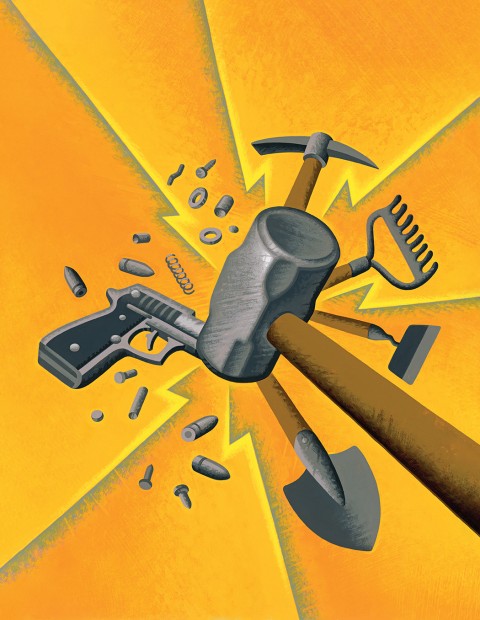Why and how we beat guns into garden tools
RAWtools began with a blacksmith and a friend’s donated AK-47.

The United States has the most guns in the world—by far. And it has the most gun deaths in the world—by far. The United States has more gun homicides than all the other industrial countries combined. There are 29.7 gun homicides per million people in the U.S. The next most violent country when it comes to gun homicides is Switzerland, with 7 per million. So we have four times more gun violence than the next country. We have six times more gun homicides than Canada, and 16 times more than Germany.
Those numbers refer to lives lost. There are tens of thousands each year who are victims of gun violence and yet survive. An estimated 73,000 people per year are injured by guns, many of them in life-altering ways. There are over 400,000 crimes involving guns each year. Young people from ages 18 to 20 commit a disproportionate amount of gun violence, accounting for only 5 percent of the population but nearly 20 percent of homicide and manslaughter arrests. Young people not old enough to buy beer or rent a car are able to buy and carry guns.
The United States has about 5 percent of the world’s population, but we have almost half of the world’s privately held guns (42 percent). There are nearly five times more licensed gun dealers in America than there are McDonald’s restaurants. And those are just the licensed dealers.




